#claudius civilis
Text
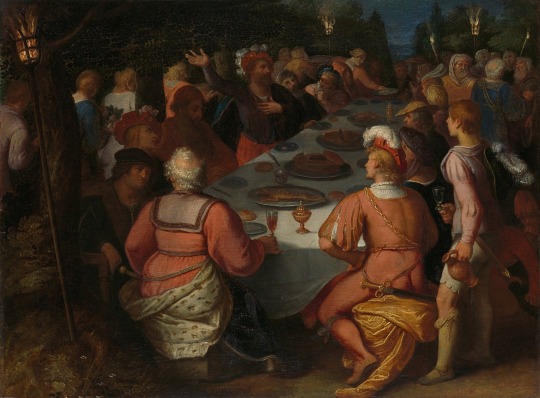
The Conspiracy of Claudius Civilis and the Batavians in the Schakerbos | The Conspiracy of Julius Civilis and the Batavians in a Sacred Grove
by Otto van Veen
#julius civilis#claudius civilis#batavians#revolt#batavi#art#painting#history#europe#european#otto van veen#conspirators#conspiracy#roman empire#province#sacred grove#germania#germanic#tribes#uprising#netherlands#holland
14 notes
·
View notes
Text
Het lege land van de overschatte koning
De historicus Auke van der Woud (Sneek, 1947) is geen bewonderaar van koning Willem I. Zoveel is duidelijk na lezing van ‘Het lege land, 1800-1850’, de in 2022 verschenen bewerking van zijn al uit 1987 daterende, sedertdien vaak herdrukte dissertatie, die aanvankelijk ‘Het lege land, de ruimtelijke orde van Nederland 1798-1848’ heette. Dat het boek er was, was mij tot voor kort ontgaan, maar…
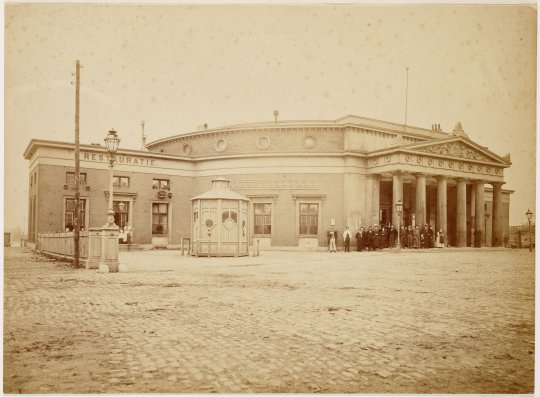
View On WordPress
#1798#Amortisatie#Amsterdam#architectuur#Auke van der Woud#Bataafse mythe#Claudius Civilis#Cornelis Outshoorn#H.T. Colenbrander#Het lege land#infrastructuur#Joseph Paelinck#Leiden#Lodewijk Napoleon#Luik#Marcel Gauchet#Ponzi#Staatsregeling#Station Willemspoort#Willem I#Zuid-Willemsvaart
0 notes
Text
The story of The Conspiracy of Claudius Civilis goes beyond its mere depiction. Commissioned in 1661, the Dutch city council sought an iconic piece for the new town hall in Amsterdam. The council turned to Rembrandt, a famous master, to create a series of paintings honoring the Batavian revolt against the Romans, a historical event cherished by the Dutch as a symbol of their resistance against Spanish rule.
This specific artwork, however, illustrates the pivotal moment of the Batavian revolt. It showcases the scene where the Batavian chieftain, Claudius Civilis, leads the conspiracy against the Roman Empire. Surrounded by his fellow Batavian chiefs, Civilis swears an oath to free their people from Roman rule.
#art#culture#art history#artwork#painter#painting#artblog#wall art#home decor#dutch art#dutch culture#dutch painter#dutch artist#dutch golden age#rembrandt#rembrandt harmenszoon van rijn#The Conspiracy of Claudius Civilis
0 notes
Text
JLRRT’s Favorites
Includes only works that I’ve read, watched or listened to. Some works are out of date or contain errors, but are still included for their enjoyable writing or other strengths. This list will be updated as I find new media I like. Feel free to recommend more to me!
Biographies
Antony and Cleopatra, by Adrian Goldsworthy (review)
Augustus: First Emperor of Rome, by Adrian Goldsworthy (review)
Augustus: The Life of Rome’s First Emperor, by Anthony Everitt (review)
Brutus: The Noble Conspirator, by Kathryn Tempest (review)
Caesar: Life of a Colossus, by Adrian Goldsworthy (review)
A Companion to Julius Caesar, anthology, ed. Miriam Griffin (review)
Julius Caesar and the Roman People, by Robert Morstein-Marx (review #1, review #2)
Cato the Younger: Life and Death at the End of the Roman Republic, by Fred Drogula (review)
Cicero: The Life and Times of Rome’s Greatest Politician, by Anthony Everitt (review)
Clodia Metelli: The Tribune's Sister, by Marilyn Skinner (review)
Fulvia: Playing for Power at the End of the Roman Republic, by Celia Schultz (review)
Marcus Agrippa: Right-hand Man of Caesar Augustus, by Lindsay Powell (review)
Scipio Africanus: Rome’s Greatest General, by Richard Gabriel (review)
Servilia and her Family, by Susan Treggiari (review)
Sulla: The Last Republican, by Arthur Keaveney (review 1, review 2)
Tiberius Caesar, by David Shotter (review)
Tiberius, by Robin Seager (review)
Classical Sources
Catiline’s War, by Sallust (review)
The Jewish War, by Flavius Josephus
The Twelve Caesars, by Suetonius (review and discussion; see also my Suetonius tag)
Other Nonfiction
A Companion to the Roman Republic, eds. Nathan Rosenstein and Robert Morstein-Marx
The Last Generation of the Roman Republic, by Erich Gruen (review)
Latin for All Occasions and X-Treme Latin by Henry Beard
Horrible Histories: The Rotten Romans, by Terry Deary (middle grade audience)
Roman Homosexuality, by Craig Williams (review, chapter summaries)
SPQR: A History of Ancient Rome, by Mary Beard (review, timeline from the book)
The Storm Before the Storm, by Mike Duncan (review)
Comics
Cardinal's art and comics on Tumblr
The Cartoon History of the Universe series, by Larry Gonick (graphic novel; Roman history starts in Volume II; review)
The Dead Romans Society on Tumblr
Historical Fiction Books
Augustus, by John Williams (review)
The Cicero Trilogy (Imperium, Lustrum, Dictator), by Robert Harris (review)
The City War, by Sam Starbuck (review)
Cleopatra: Daughter of the Nile, by Kristiana Gregory (middle grade audience; review)
Masters of Rome series, by Colleen McCullough (review)
Roma soy yo, by Santiago Posteguillo (review)
Roma Sub Rosa series, by Steven Saylor (review, suggested reading order)
Podcasts
The History of Rome by Mike Duncan
TV, movies, videos
Fulvia y Cleopatra, dos destinos cruzados - Spanish docudrama (review)
A Funny Thing Happened on the Way to the Forum
Hannibal’s March on Rome, Smithsonian Channel
Historia Civilis Youtube Channel
Invicta Youtube Channel
I, Claudius, BBC
Last Days of Pompeii, Amazon Prime Documentary
Meet the Romans with Mary Beard
Murder in Rome, BBC Timewatch
Overly Sarcastic Productions Youtube Channel
Rome: Empire Without Limit with Mary Beard
Plays
The Tragedy of Julius Caesar by William Shakespeare
See also:
Things I look for in history books - my tips for evaluating whether a book is reliable
Warning signs of fascism in history media - also by me, with additional antifascist resources.
Disability studies for ancient Greece and Rome
White supremacy, racism, and decolonizing classics studies
Women in Classical Antiquity (list of scholarly sources)
Queer Classics: A Speculative Reading List
LGBT Meets SPQR
Lesbiantiquity: "A zine-anthology of Greek & Latin writings about women loving women"
Resources for learning about Black history
82 notes
·
View notes
Note
Frank, could you explain the causes of the French Revolution? A timeline of events would be a great bonus.
"Timeline of Events"
3.5 million years ago: first human ancestor evolved from a smaller ancestor
2.1 million years ago: Australopithecus evolved from smaller ancestors
900,000 years ago: Homo Habilis evolved from earlier human ancestors
700,000 years ago: Neanderthals first evolved from Homo Habilis
35,000 years ago: earliest Homo Sapiens sapiens is thought to have arrived in France
11,700 years ago: Late Stone Age dietary record of French Emperor Louis XVI's ancestor found near Paris, indicating the possible site of his castle Chateau Versailles
2,800 BCE: Celtic invaders migrate from what is now the Ukraine and Bulgaria
822 BCE: first Celts found on the isle of England
61 BCE: Julius Caesar arrives in what is now France and begins campaign against Celts
55 BCE: Julius Caesar captured by Gallic mercenaries on the banks of the Aisne river
53 BCE: Brennus of the city of Nassus leads first Gallic invasion of Italy
51 BCE: Pompey the Great ends Gallic occupation of Italy
38 CE: Emperor Claudius pacifies the Gauls after a Gaulish invasion of the isle of Britain
396 CE: Emperor Constantine, recognizing the influence of the Parisian countryside, transfers his capital to what is now France
476 CE: The Roman Emperor Romulus Augustulus is deposed, marking the end of the Roman Empire
583 CE: Good King Charlemagne unites the Frankish people into a single kingdom
1494 CE: the Parliament of Toulouse passes the Edict of Purification, requiring Jews to convert to Christianity or leave the country
1531 CE: Henry VIII becomes first King of England and France
1610 CE: Francis Bacon publishes the New Organon, asserting in chapters 17 and 18 that the Heavens contain a fluid which he theorizes is the component of all matter on Earth
1632 CE: Corpus Juris Civilis, the universally agreed-upon legal code of the Catholic Church, dissolved
1648 CE: Protestant forces in France defeat Catholic forces, marking the beginning of the French Revolution
1848 CE: King Louis Philippe is deposed and the Second French Republic established
1870 CE: France is annexed by Prussia and Germany
1914 CE: an assassination in Sarajevo sparks World War I
1945 CE: Winston Churchill's government publishes the Paris Protocols, detailed proposals for the creation of the European Union
1958 CE: the European Union is founded, consisting of the six member states of France, West Germany, Italy, Luxembourg, the Netherlands, and Belgium
34 notes
·
View notes
Text
louis' bookshelf: the begin again reading list
I forgot to post this after I finished the fic, but these are the sources for all the thematically relevant references in Begin Again. I know my writing style can be polarizing, but I was so flattered and excited by the enthusiasm for my love of intertextuality, so these are the pieces of writing that inspired me. They're listed in order of appearance!
-
Macbeth by William Shakespeare
Homer's Iliad
The Unabridged Journals by Sylvia Plath
Prometheus Bound by Aeschylus
Almagest by Claudius Ptolemy
Hamlet by William Shakespeare
Vergil's Aeneid
Bello Gallico by Julius Caesar
Lives of the Twelve Caesars by Suetonius
Bucolic II by Vergil
Summa Theologica by Thomas Aquinas
The Fairy Tales by Hans Christian Andersen
Wuthering Heights by Emily Brontë
Dracula by Bram Stoker
Dr. Zhivago by Boris Pasternak
The Raven by Edgar Allan Poe
The Double by Fyodor Dostoevsky
Doctor Faustus by Christopher Marlowe
Dante's Divine Comedy
The Goblin Market by Christina Rossetti
Othello by William Shakespeare
Gray's Anatomy by Henry Gray
A Critique of Pure Reason by Immanuel Kant
God is Dead by Friedrich Nietzsche
The Stranger by Albert Camus
Paradise Lost by John Milton
Candide by Voltaire
Les Fleurs du mal by Charles Baudelaire
Much Ado About Nothing by William Shakespeare
Frankenstein by Mary Shelley
The Arthurian Romances by Chretien de Troyes
Alice’s Adventures in Wonderland by Lewis Carroll
David Copperfield by Charles Dickens
The Faerie Queene by Edmund Spenser
De Clementia by Seneca the Younger
The Prince by Niccolò Machiavelli
Life Without Principle by Henry David Thoreau
Two Treatises of Government by John Locke
The Spirit of the Laws by Baron de Montesquieu
Bello Civili by Julius Caesar
The Brothers Karamazov by Fyodor Dostoevsky
Lenore by Edgar Allan Poe
Cyrano de Bergerac by Edmond Rostand
#maybe someday i'll make you all read my director's commentary where i pepe silvia the themes#fic: begin again#vc
15 notes
·
View notes
Text
Hereges – Leonardo Padura

Outro autor que dispensa apresentações... Todos os livros dele são excepcionalmente bons! Hereges conta várias histórias, entrelaçadas por um pequeno quadro de Rembrandt retratando um jovem judeu como um Cristo humanizado. Tais histórias cobrem desde Rembrandt e seu quadro, o modelo que foi usado e que queria ser pintor, os que levaram esse quadro na sua viagem ao fugir do nazismo e tentar entrar em Cuba, seu misterioso reaparecimento numa casa de leilões e o personagem Mario Conde, tão presente nos livros de Padura, que vai investigar tanto o sumiço como seu reaparecimento, a pedido de um dos descendentes dos legítimos proprietários desse quadro.
“Na manhã de 14 de junho de 1642... Rembrandt seguia o andamento fúnebre da modesta carroça em que viajavam os restos daquela que havia sido sua esposa e musa mais solicitada,...
,,, Rembrandt van Rijn chorou com toda a sua tristeza....o pintor jurou que nunca mais choraria. Por motivo algum....
... Então, Rembrandt van Rijn, tão esgotado, não teve força para cumprir o juramento que fizera a si próprio. Antes de morrer, ele teria de chorar mais quatro vezes.
Porque Rembrandt chorou na tarde de 1656 quando, vencido pelas pressões dos credores, teve de declarar falência e abandonar a sua querida casa no número 4 da Jodenbreestraat, enquanto os membros do Tribunal de Insolvências Patrimoniais faziam o inventário de todos os seus pertences, obras, lembranças, objetos, acumulados durante anos, para serem liquidados em leilão público em benefício de seus credores.
Voltaria a chorar na noite de 1661, quando os altos dignatários da prefeitura de Amsterdã, sem pagar um centavo pelo trabalho solicitado, recursaram, por considera-la imprópria, rude e até mesmo inacabada, sua peça A Conspiração de Claudius Civilis...
O homem voltaria a chorar em 24 de julho de 1663, quando deixou em um túmulo da Westerkerk o cadáver de Hendrickje Stoffels, a mulher que o acompanhara durante quase vinte anos...
E, quando já não lhe restavam forças sequer para amaldiçoar a Deus, teria de chorar outra vez em 7 de setembro de 1667, quando, contra natura, viu morrer seu filho Titus, quinze dias antes de completar 27 anos de idade. Tanto chorou essa morte que apenas um ano depois ele também morreria, lamentando o macabro atraso do Criador.”
“Lá fora começou a cair uma chuva cortada por relâmpagos. Eles, a salvo de qualquer inclemência externa, beberam em silêncio, como se não tivessem nada para dizer, mas, na verdade, não precisavam falar porque já haviam dito tudo. Os anos e as pancadas da vida lhes ensinaram a aproveitar plenamente os instantes em que o prazer era possível para depois, avaros, jogarem essa efêmera sensação de vida desfrutada no mealheiro dos ganhos indeléveis, um recipiente translúcido como a memória e que sempre podia se quebrar caso viessem tempos piores, quando haveria até mais razões para chorar. E eles também sabiam que essa era uma possibilidade permanentemente à espreita. Mas estavam ali, tenazes, bebendo, trancados por vontade própria entre as muralhas erguidas para proteger o melhor de sua vida, seus únicos pertences inalienáveis.”
Se quiser ouvir o próprio autor falando sobre o livro veja
youtube
1 note
·
View note
Photo
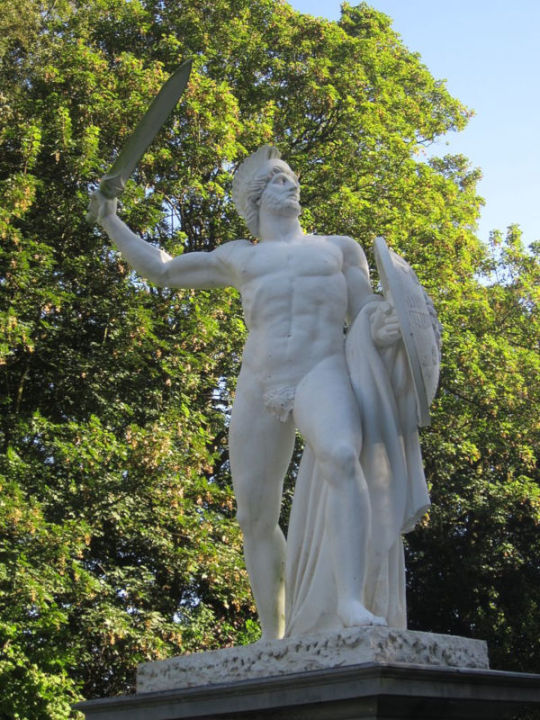
Statue of Claudius Civilis
This statue represents the Batavian resistance hero, who fought against the rule of the Romans.
Read more at: https://paganplaces.com/places/statue-of-claudius-civilis/
0 notes
Text


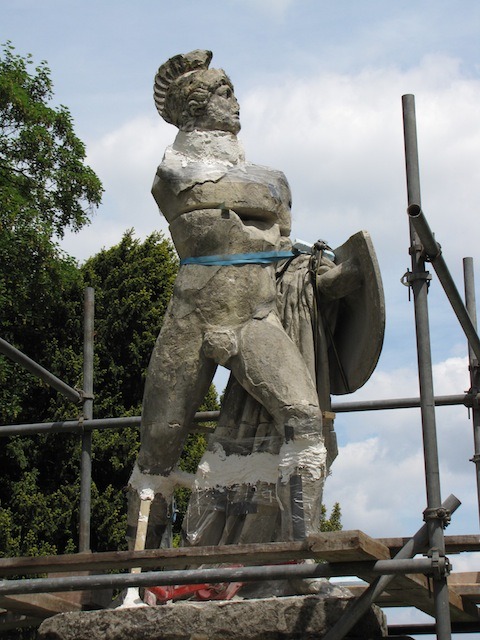


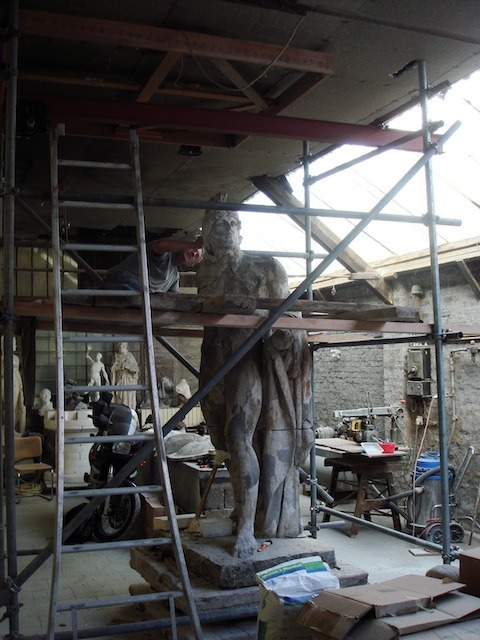
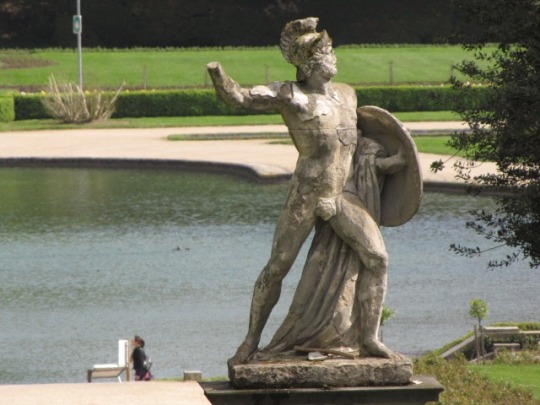
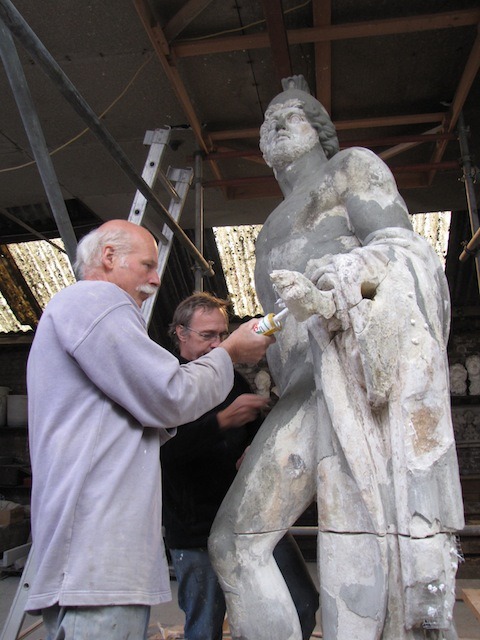
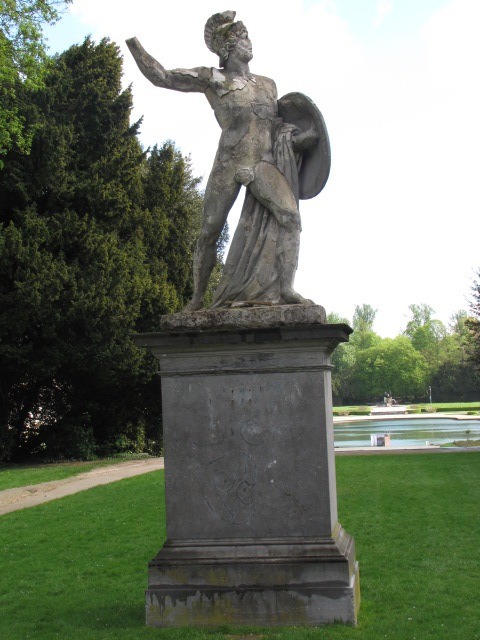
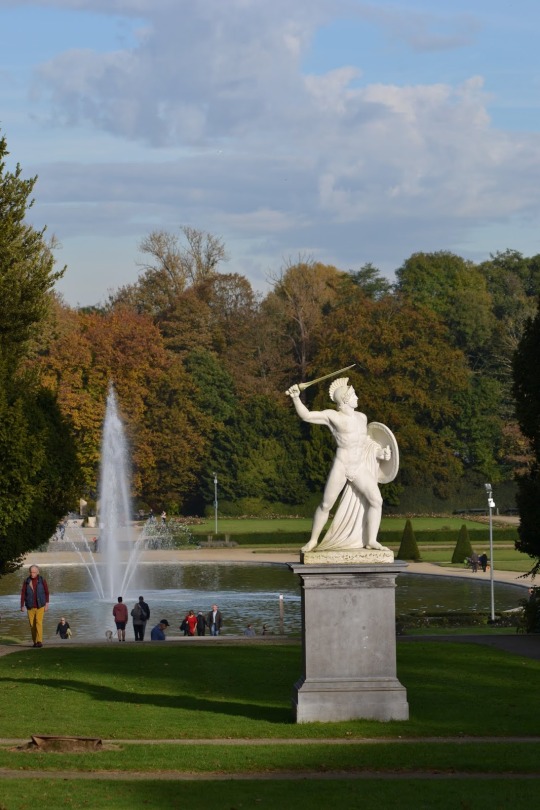
(Part 1/4). Claudius Civilis by Jean-Louis Van Geel 1820-1821, replica by Guido van Vliet 2011-2013
"The original sculpture, the work of Johannes Ludovicus van Geel, was carved in limestone from the region of Valenciennes. This highly porous stone was used frequently during the Dutch period, including in the Palace of the Academies in Brussels. The sculpture had suffered from the weather and lost much of its detail. Besides stone erosion also the marble color painting HAD almost completely disappeared. Furthermore, the sculpture was severely damaged by vandals (a hand with the Roman Gladius short sword has disappeared).
On 13 May 2011 the statue was disassembled and transported to the sculptor's studio in Vilvoorde. There was made an exact copy. The original is kept as an archaeological relic and temporarily placed in a shed in the Park. On 6 May 2013 the replica was placed in the park."
-taken from statues.vanderkrogt
https://paganimagevault.blogspot.com/2020/05/claudius-civilis-by-jean-louis-van-geel.html
#the batavian revolt#pagan#europe#european art#paganism#dutch history#the netherlands#art#art history#sculpture#statue#monument#classical art#guido van vilet#19th century art#21st century art#jean louis van geel#claudius civilis
75 notes
·
View notes
Photo

Georg Sturm (1855-1923)
Claudius Civilis predikt den opstand tegen de Romeinen
1880s
#art#art history#rijksmuseum#nationalism#romans#Claudius Civilis#Claudius#Georg Sturm#Amsterdam#Rijksmuseum Amsterdam#19th century art#19th century
144 notes
·
View notes
Text
Heel oude helden, minder oude helden en ook nog striphelden Asterix en Obelix
Wat die veel bediscussieerde Nederlandse identiteit te maken heeft met Asterix en Obelix legt Toos van Holstein uit in haar wekelijkse kunstblog TOOS&ART. Oh ja, Rembrandt komt ook nog even voorbij. #kunst #art #expo #Asterix

beelden van Vercingetorix
Een paar jaar geleden stond ik in Clermont Ferrand plotseling oog in oog met een woest uitgedoste Galliër. Vercingetorix, naar bleek. Hij moest mij overigens wel schriftelijk worden voorgesteld via de bijbehorende museumtekst. Want deze vrijheidsstrijder voor Gallië, dat wat nu dus zo’n beetje Frankrijk is, bleek al bijna tweeduizend jaar dood. Begin 2018 schreef ik al…
View On WordPress
#Alesia#Asterix#Aznavour#Claudius Civilis#Clermont-Ferrand#Galië#Gergovia#Idéfix#identiteit#Jan van Schaffelaar#Jan van Speijk#Julius Caesar#Kenau Simonsdochter Hasselaer#La traviata#Marco Kroon#nationalisme#Obelix#Rembrandt#Romeinen#Tachtigjarige Oorlog#Vercingetorix#Verdi#Willemsorde
0 notes
Photo
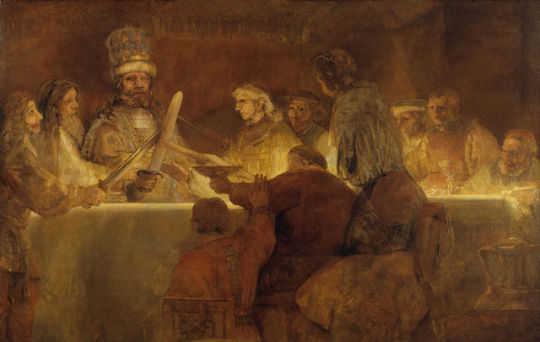
The Conspiracy of Claudius Civilis [1661 - 1662]
Rembrandt [1606 - 1669]
101 notes
·
View notes
Photo
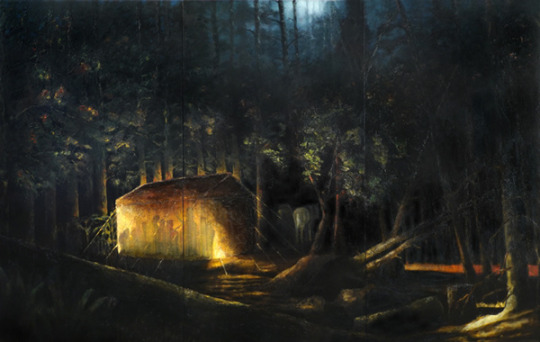
The Conspiracy of the Batavians under Claudius Civilis - Jarik Jongman,2019.
Dutch, b. 1962 -
Oil on board , 196 x 309 cm. (triptych)
111 notes
·
View notes
Note
Im so interested in the roman empire and I want to ask you how can we go about in studying it and its figures? im always amazed to see your knowledged and makes me want to dive deep into it
Aww, thank you! I keep a list of recommended books, TV and other media about Rome, which you may like. If you are totally new to Roman history, here are my favorite "starting points":
Roma Sub Rosa, novel series by Steven Saylor: detective mysteries spanning the careers of Cicero, Pompey, and Caesar, with found family, strong female characters, and the world's most Tired Bisexual Dad for a narrator. If you like gay shipping I especially recommend book #3, Catilina's Riddle. Fiction, but mostly accurate to real history. (suggested reading order)
Masters of Rome, novel series by Colleen McCullough: Political intrigue, war drama, follows the careers of Gaius Marius, Julius Caesar, Octavian, and to a lesser extent other historical figures from 110 BCE to 27 BCE. Depicts period-typical prejudices, and has a pro-Caesar bias, but it's extremely well-researched. Has a bit of a Lord of the Rings vibe in its epic scale and strong worldbuilding.
Historia Civilis, YouTube channel covering the politics of 63 BCE to 30 BCE (and ongoing!). Mostly drama, with a bit of silliness and snarky humor. I have never been so emotionally invested in angry squares.
Overly Sarcastic Productions is another channel with some very funny, and accurate, overviews of Roman history. Blue is an enthusiastic presenter and a lot of fun to listen to.
Mike Duncan's History of Rome podcast is a whole saga spanning from 753 BCE to 476 CE. It's especially good for learning about the Punic Wars and the period after the Julio-Claudian dynasty.
Some people also get into Roman history through shows like Rome (HBO), Domina, or I, Claudius. These aren't super historically accurate, but sometimes it's helpful to watch a dramatized version first and learn the real story later. (Fair warning, each of these depicts violence and sexual assault.) Do what works for you!
After you've poked at one of those, I'd suggest reading a biography of a Roman who seems interesting. I have several recommendations on my list. Biographies are great because they're usually easy to read and feel like following a story. Or, if you want a very good summary of Roman history and everyday life, check out Mary Beard's book SPQR.
Beyond that, just keep picking up books and articles about whatever looks interesting. Your local library is great for this, and so is JSTOR, a virtual library full of useful articles! You can also find new book recommendations by looking through the bibliographies in books you already read.
Have fun!
49 notes
·
View notes
Text
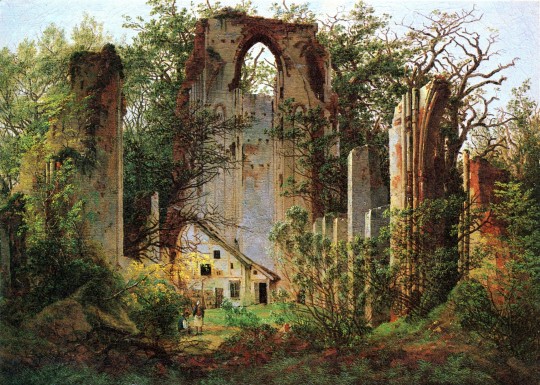
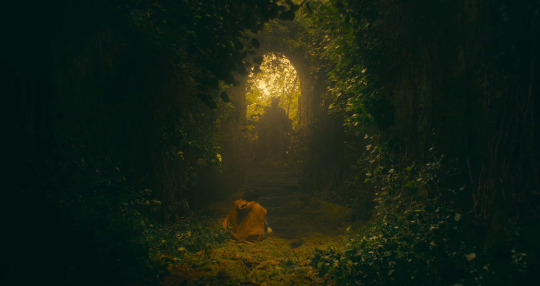
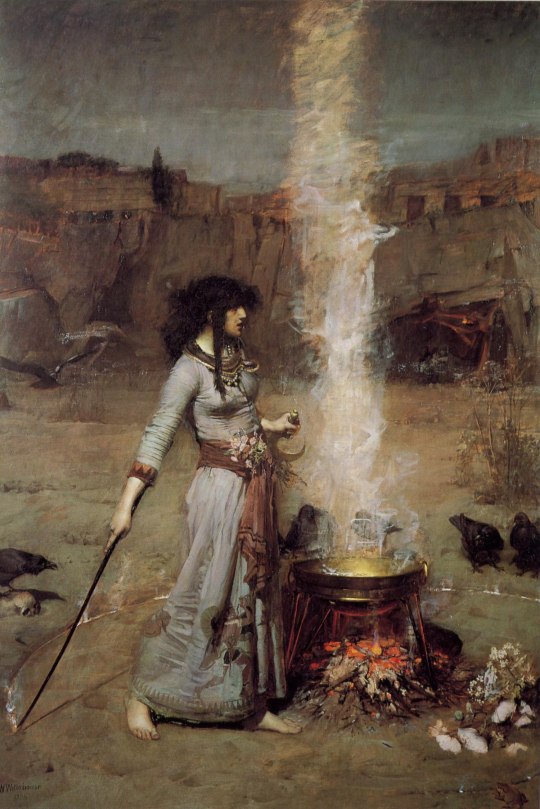
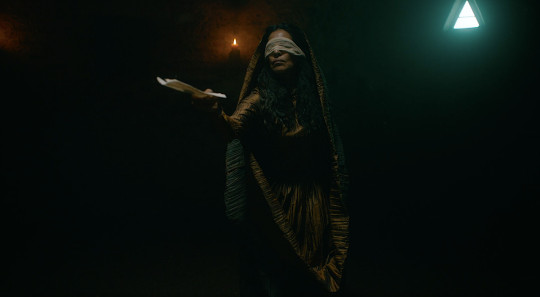
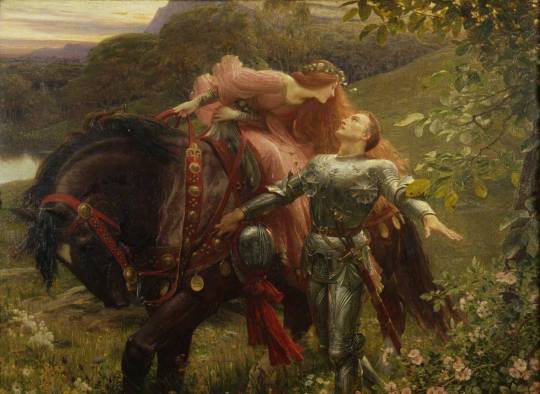



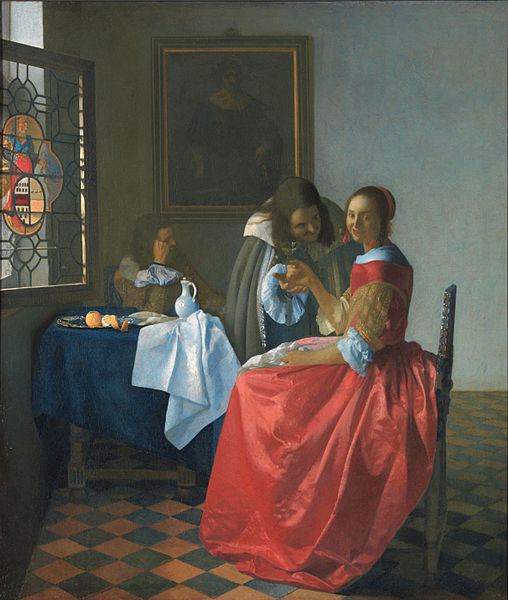
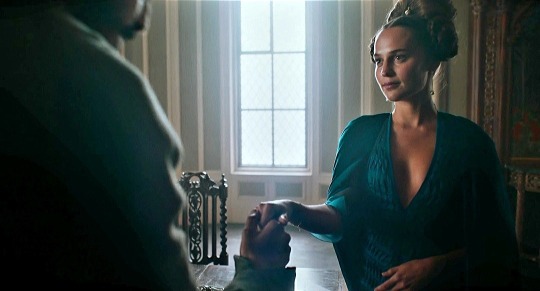
The Green Knight + art
Caspar David Friedrich 'Klosterruine Eldena'
John William Waterhouse 'Magic Circle'
Frank Bernard Dicksee 'La Belle Dame Sans Merci'
Rembrandt 'The Conspiracy of Claudius Civilis' (closeup)
Johannes Vermeer 'Girl with a wine glass'
12 notes
·
View notes
Photo
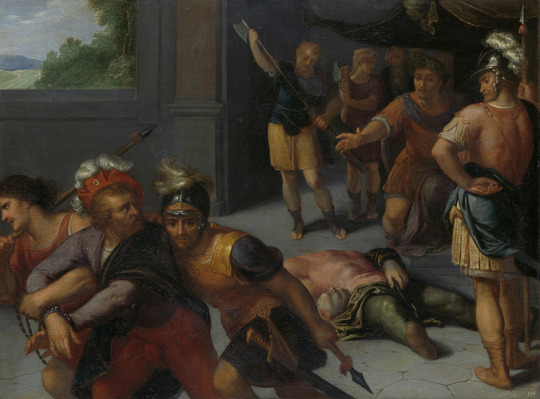
The Beheading of Claudius Paulus and the Capture of Julius Civilis, Museum of the Netherlands
In 1613, the Dutch parliament (States General) commissioned Otto van Veen to paint twelve paintings depicting the revolt of the Batavians against the Romans in AD 69 and 70. These were displayed in Binnenhof, the central government building in The Hague. In the early years of the Dutch Republic, many compared their own revolt against Spain to the Batavian uprising.
http://hdl.handle.net/10934/RM0001.COLLECT.6796
8 notes
·
View notes